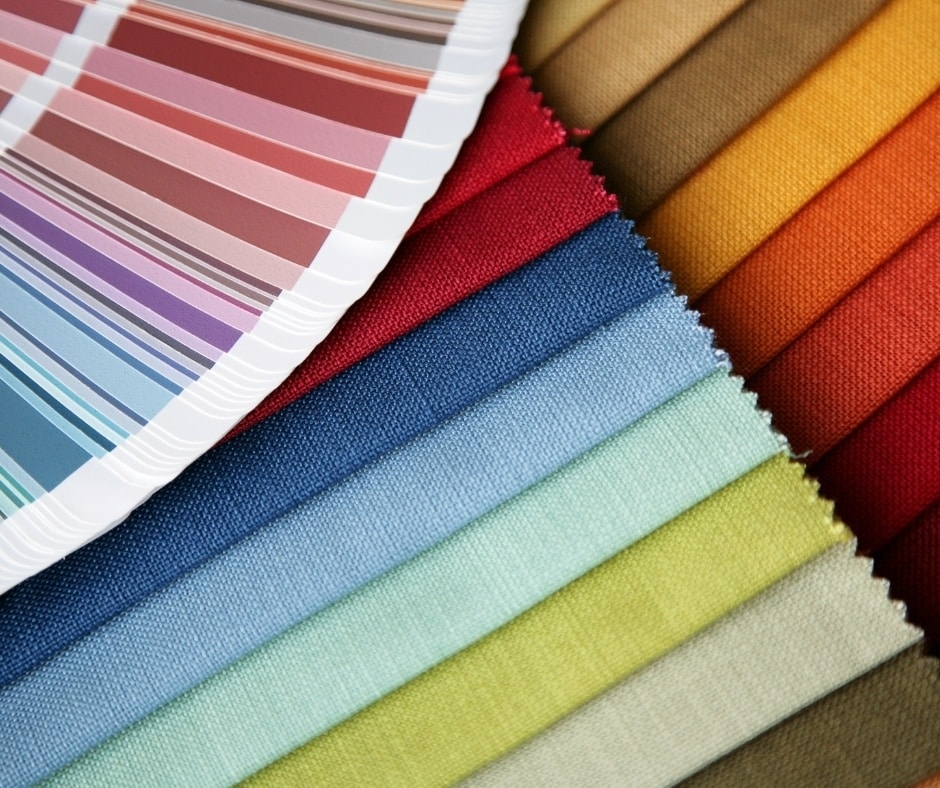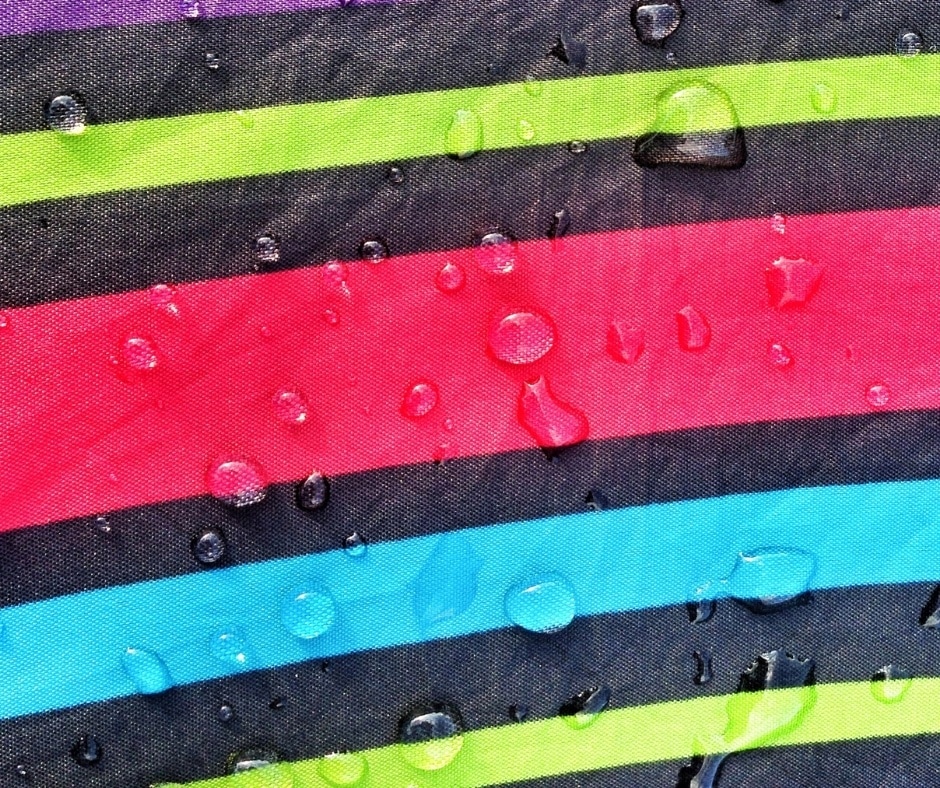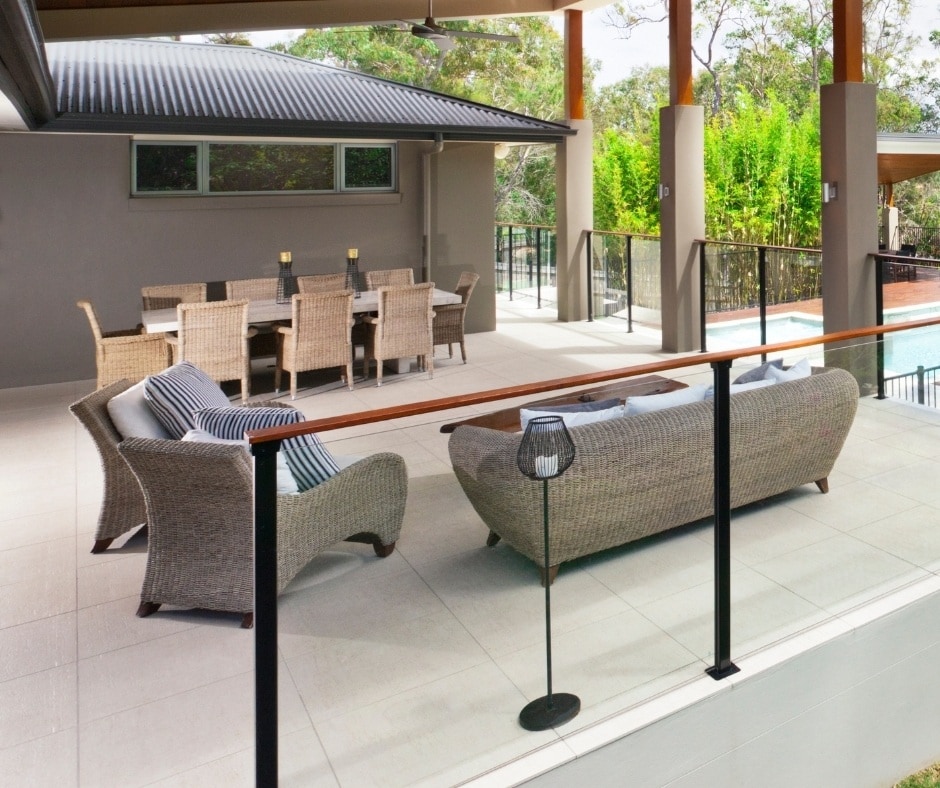If you’re shopping for furniture with a synthetic covering, you might have run across the words olefin and polyester. Because both are made from the same basic material, plastic, you probably wonder what the differences are between them.
There are differences between the two starting with basic chemistry. You don’t need to know the science behind what sets the two apart, but it is helpful to know a little about each if you’re looking for furniture made from synthetic fibers.
We put together this quick and handy guide to help you sort out the two to help you make better-informed decisions when shopping for synthetic fabrics. We hope that you enjoy it and find it valuable.
In This Article We'll Discuss
Olefin vs. Polyester

Although the two aren’t technically perfectly interchangeable, olefin is often called polypropylene. It and polyester are both made from plastics.
One thing they have in common is they can build up static electricity if they sit for long where the humidity is out of balance. If you sit on it, you might get an unpleasant shock.
Without going into a lot of technical detail, polypropylene is made with a lower melting point. It also absorbs less water. This leads to the primary benefit and the primary negative.
On the positive side, when it becomes wet, the water tends to spread out across a wider area. It has a wider surface area and is thinner, which means it evaporates faster. This also makes it more mold resistant.
If you need a synthetic fabric for an outdoor carpet or furniture where it rains a lot, olefin is a good choice. It’s also a popular choice for basements with humidity problems.
It also wears out faster and the color fades faster because heat breaks it down more quickly. The average lifespan of olefin furniture is approximately three years. You’ll want to keep this relatively low lifespan in mind if you purchase olefin.
Polyester is more durable and is easier to wash, but it is also more expensive. You’ll also want to make sure you get a high-quality polyester to maximize its lifespan.
Is Olefin the Same as Polyester?

While the two are made from a similar chemical process and the two are synthetic, olefin and polyester are different things. There’s no need to get into a deep technical dive into how they’re made differently, but we’ll go over some differences where they count.
Olefin is better known as polypropylene, which is well-regarded for its ability to “wick” away water. It doesn’t absorb water but spreads it out throughout its fiber mass. The water occupies a lot more horizontal surface area but a lot less vertical depth. It evaporates more quickly.
Polyester is stiffer than olefin and has a higher melting point. That means it’s a bit more resistant to wear and tear while washing. It’s also a little more expensive than olefin.
If you buy polyester, try for one with a higher thread count. Otherwise, after use, you might start to notice little fuzz balls start to form. That is known as pilling, and it causes polyester to break down more quickly than you probably want.
Is Olefin Better Than Polyester?

When it comes to whether one synthetic fiber is better than another, it’s never a clear answer. Both have their strengths.
Because both are made from melted plastic, both are relatively colorfast. Olefin is a touch more resistant to direct sunlight, meaning it’ll hold its color better.
Olefin is also more mold-resistant and dries faster than polyester, which makes it a superior choice for furniture where dampness is a problem. Keep in mind, however, that it’s mold-resistant. If you put a couch covered in olefin in a basement that is always wet, it will develop mold.
Polyester is less expensive on average than olefin, especially if you go cheap on quality. That is likely to lead to pilling, which means a much shorter operational life.
So, it’s not a cut-and-dried question of whether one is better. They’ve both got strengths and you’ll want to make an educated choice of which one will suit your needs better.
Are Olefin and Polyester Good Sofa Fabrics?

The question of whether these two synthetic fibers are good sofa fabrics comes down to a very authoritative, “It depends.” People look for sofas to fill a lot of different functions, from placing in an old study alongside a lot of oak paneling to putting out something to sit on a patio.
In general, synthetic fibers like olefin and polyester work best when placed outside, where their strengths are showcased.
Both fabrics are fade-resistant to some degree, meaning you can place them where they’ll get sunlight. Traditional fabrics where the color is applied after the yarn is spun are more prone to fading.
They also do better in wet conditions. Because they’re synthetic, they’re naturally resistant to mold. Both of them will dry more quickly than a traditional fabric that will absorb and hold onto water.
They also tend to be much easier to clean. Polyester, for instance, has a reputation for being especially easier to clean off and for being stain resistant. Olefin is also easy to clean but is less tolerant of heat, so it’s a bit harder than polyester.
Both are also cheaper than a natural fabric like leather. They also wear out a lot more quickly.
Conclusion
Olefin and polyester are related in that they are both made from plastics. That gives both of them advantages when it comes to qualities like what happens when it gets wet and how stain resistant it is.
They are also different from one another. Olefin doesn’t absorb as much water and dries more quickly while polyester tends to be a bit more durable. It’s good stuff to know if you’re shopping for furniture made from synthetic fibers.
We hope you learned a thing or two from reading this, and that it’s helped you be a better-informed consumer. If it made your experience better, we’d love to hear about it in a comment down below. We’d also invite you to share this article on social media. We bet you have friends who are just as curious as you.

